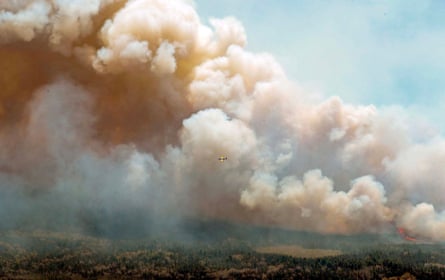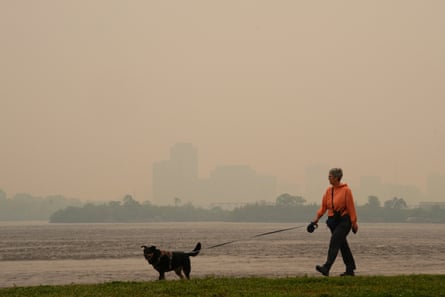Canada is dealing with a series of intense wildfires that have spread from the western provinces to Quebec, with hundreds of forest fires burning. Wind has carried smoke from the fires southward, triggering air-quality alerts throughout the United States.
The US Environmental Protection Agency (EPA) on Tuesday issued a poor air-quality alert for New England, a day after parts of Illinois, Wisconsin and Minnesota received a similar advisory. Last week, US officials as far south as Maryland, Virginia and Pennsylvania reported being affected by the wildfires.
Visible satellite imagery shows dense wildfire smoke over NYC at 6:30pm. This smoke has mixed down close to the surface resulting in terrible air quality and low visibility. pic.twitter.com/GHsiCgZYJh
— New York Metro Weather (@nymetrowx) June 6, 2023
Here’s a summary of what’s being evaluated and some suggested precautions:
What’s happening?
Smoke from Canada’s wildfires has been moving into the United States since last month. The most recent fires near Quebec have been burning for at least several days.
The EPA said hazy skies, reduced visibility and the odor of burning wood are likely, and that the smoke will linger for a few days in New England.
“It’s not unusual for us to get fire smoke in our area. It’s very typical in terms of north-west Canada,” said Darren Austin, a meteorologist and senior air-quality specialist with the Rhode Island department of environmental management. But the smoke usually has been aloft higher in the atmosphere, not affecting people’s health, he said.

The Quebec-area fires are big and relatively close, about 500 to 600 miles (roughly 800 to 970km) away from Rhode Island. And they followed wildfires in Nova Scotia, which resulted in a short-lived air-quality alert on 30 May, Austin said.
What’s the biggest concern?
Air-quality alerts are triggered by a number of factors, including the detection of fine-particle pollution – known as “PM 2.5” – which can irritate the lungs.
“We have defenses in our upper airway to trap larger particles and prevent them from getting down into the lungs. These are sort of the right size to get past those defenses,” said Dr David Hill, a pulmonologist in Waterbury, Connecticut, and a member of the American Lung Association’s national board of directors. “When those particles get down into the respiratory space, they cause the body to have an inflammatory reaction to them.”

Trent Ford, the state climatologist in Illinois, said the atmospheric conditions in the upper midwest creating dry, warm weather made it possible for small particulates to travel hundreds of miles from the Canadian wildfires and linger for days.
“It’s a good example of how complex the climate system is but also how connected it is,” Ford said.
Who should be careful?
Exposure to elevated fine particle pollution levels can affect the lungs and heart.
The air-quality alerts caution “sensitive groups”, a large category that includes children, older adults and people with lung diseases, such as asthma and chronic obstructive pulmonary disease.
Kids, who often are encouraged to go out and play, “are more susceptible to smoke for a number of reasons”, said Laura Kate Bender, the American Lung Association’s national assistant vice-president, healthy air. “Their lungs are still developing, they breathe in more air per unit of body weight.”
What can you do for now?
It’s a good time to put off that yardwork and outdoor exercise. If you go out, consider wearing an N95 mask to reduce your exposure to pollutants.

Stay inside, keeping your doors, windows and fireplaces shut. It’s recommended that you run the air conditioning on a recirculation setting.
“If you have filters on your home HVAC system, you should make sure they’re up to date and high quality,” Hill said. “Some people, particularly those with underlying lung disease, or heart disease, should consider investing in in air purifiers for their homes.”

